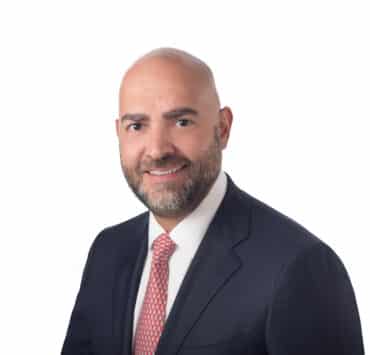|
Getting your Trinity Audio player ready...
|
In an election year where the often-negative rhetoric around immigration is at an all-time high, Welcome Tech Cofounder and Chief Community Officer Raul Lomeli-Azoubel believes the best thing his startup can do is to continue to center immigrant communities and connect them with the right resources.
“What we always wanted to develop at Welcome Tech was the way for us to really educate this immigrant population so that they will be able to become better informed, confident, and active participants in US society,” Lomeli-Azoubel explains. “We’re all about education and how do we change behavior. And by changing behavior, we can point them to the right products and services that can benefit their lives.”
Welcome Tech started as Latino-focused SABEResPODER in 2003 before rebranding its name and expanding to serve all immigrant communities. The startup offers immigrant individuals and mixed-status families a single hub to connect them with everything from medical resources to financial guidance and tools.
“I don’t understand why this country won’t provide the same benefits to the children of immigrants.”
Raul Lomeli-Azoubel
As Lomeli-Azoubel describes it, he hopes that Welcome Tech will become a digital Ellis Island one day.
“We continue to believe that we have an ability just because of the sheer numbers that we now have at Welcome Tech to be truly the digital Ellis Island,” Lomeli-Azoubel says. “We want to be in a position where we can help augment the impact that immigrant communities already have in the United States in every single component but very much at the local level. And because we can provide information in such a targeted way, our communication is very effective and efficient.”
How Welcome Tech Closes the Technology and Resources Gap for Immigrant Families
Lomeli-Azoubel’s inspiration for Welcome Tech dates back to his own immigrant family and their story.
“We sometimes get lucky just by the month that one is born,” he says. “My parents are migrant farmworkers, so myself and my younger brother [were born] right in the middle of the harvest season, which meant we were born in the United States. My two older brothers, they were born in March, which meant they were born in Mexico.”

Raul Lomeli-Azoubel
Cofounder and Chief Community Officer
Welcome Tech
It wasn’t until the family moved to the United States that Lomeli-Azoubel realized what their different birthdays meant. He didn’t speak the language, but he had a birth certificate that allowed him to go to US schools.
“From a very early age, I always felt a bit of an enigma, because why was it that because I was born in the US, I had all the opportunities while I had very good friends in high school [for whom] that was the opposite, right?” he says. “I’ve always tried to find an opportunity [to ask] how do I give back? Because what I’ve received has been far too generous from this country, and I don’t understand why this country won’t provide the same benefits to the children of immigrants.”
Welcome Tech bridges the information and resources gap that many immigrants and mixed-status families contend with when establishing a home in the United States. Because technology barriers can often make accessing resources difficult for the immigrant community, Welcome Tech also aims to meet individuals where they are.

They have a closed-circuit television network within Latin American consulates in the United States that loop through Welcome Tech’s available resources. Individuals waiting at a consulate are encouraged to text a number that will ask them for basic information—first name and zip code, never social security numbers or specific addresses—and use that information to connect them with medical and financial resources.
Additionally, Welcome Tech is partnering with a handful of corporations to pilot incorporating workspace iPads that would more easily connect immigrants in their workforce to resources like telehealth appointments or financial advice on the best bank account for them.
Pushing Boundaries for the Sake of the US-Based Immigrant Community
“Our community is very wise, and once they begin to see that there’s a good service, they’ll stay with you,” Lomeli-Azoubel shares about the platform’s 4 million active users. “[Onboarding users] is not without its challenges. The same issues we had back in 2003 when we started, which at the time was all about opening bank accounts, we’re seeing now with the dental offices.”

But over the last decade, Welcome Tech has learned how to better support and engage with its users and the spaces that they are connecting them with. For instance, for those who upgrade from Welcome Tech’s free version to their monthly membership, which grants them access to dental coverage, Welcome Tech has added a support phone number that a member can hand over to a dental clinic representative should they have an issue at intake. The goal here is to make using the resource as easy for members as the organization has made connecting them to the resource in the first place.
Lomeli-Azoubel believes that Welcome Tech will be able to serve even more immigrant communities as technology and artificial intelligence (AI) continue to evolve.
“We have such massive data sets that go back over a decade from all the interactions that we’ve had,” he adds. “If we’re able to remove the personal information indicators from these users . . . [we will be] able to really begin to develop the type of trusted advisor using artificial intelligence.”
As Lomeli-Azoubel and Welcome Tech look to the future, their goal is to not only train AI to engage in multiple languages with users but also offer accurate and fact-based information on questions that their team currently answers in real time.
For Lomeli-Azoubel, it’s all about connecting immigrant communities to as many tools as possible to make them feel more comfortable and at home wherever they are settling into a new home.

